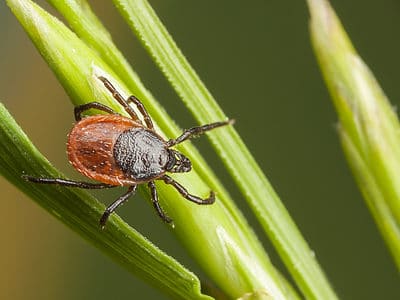A host is an organism that serves as a shelter, food source, or breeding area for a smaller organism.
Hosts Meaning
Hosts are organisms involved in a symbiotic relationship with another creature that is typically smaller than them. Some of these relationships are beneficial for both creatures in some way. However, the organism referred to as the host usually receives less of a benefit compared to the other animal. In some cases, they may have outright harm done to them by the creature living in or on them.
A dog with ticks is an example of a host animal with a symbiont. This specific kind of interaction is called parasitism. In this relationship, the tick actively feeds on the blood of the canine and lives on the surface of the animal.
The extent to which a host benefits or suffers as a result of a symbiotic relationship depends on the type of interaction it has with the other animal. Not all of them are as one-sided as parasitism.
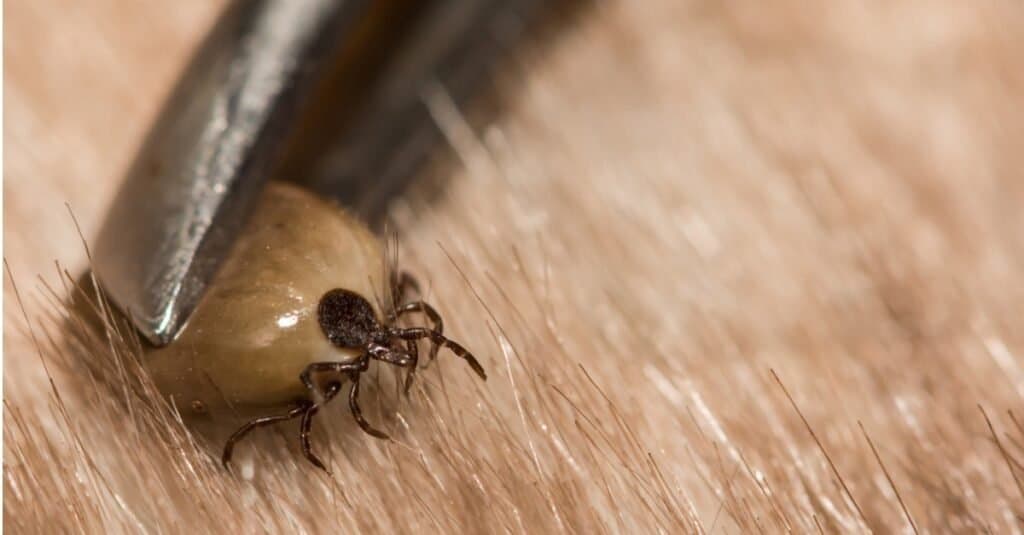
Female Deer Tick removed from an accidental host.
©iStock.com/JasonOndreicka
What Are Common Types of Symbiotic Relationships for Hosts?
Several types of symbiotic relationships exist between a host and another animal. Each of them has a certain level of give and take between the creatures involved. Three of the most common examples of host-symbiont interactions include commensalism, mutualism, and parasitism.
Commensalism
Commensalism is a type of long-term interaction between two organisms where one species obtains a benefit, like food, while the other is neither harmed nor receives a benefit at all. One very basic example of commensalism is when birds build nests in trees. The host tree is not harmed by the presence of the bird, but the bird receives protection from predators and cover.
Another example of commensalism is when a remora attaches itself to another large fish, like a shark. The remora gets the benefit of riding along with the shark while also getting to feast on their feces.
Lastly, humans are hosts to a variety of bacteria that live in their intestines. Many of these bacteria simply flourish in humans without causing any harm. Of course, some types of bacteria can cause serious health problems for humans.
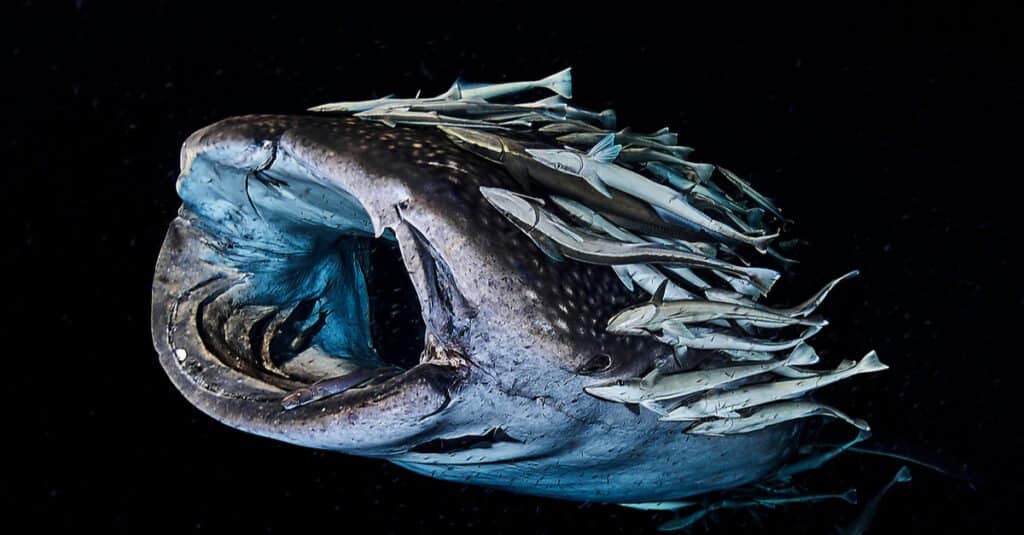
Remora attach themselves to sharks to feed on their waste.
©Alex Rush/Shutterstock.com
Mutualism
Mutualism is a form of symbiosis that has a benefit for both organisms involved. This type of symbiosis is probably the most familiar to humans.
After all, over half of the households in the U.S. have a pet. Humans domesticated dogs, giving dogs access to food, shelter, and warmth. Meanwhile, humans received a creature that would loyally guard their homes or camps while they slept for the low price of whatever food the human wasn’t going to eat.
The same can be said about the domestication of cats. Domestic cats are very active pest control agents that got repaid with food and shelter. In this case, the human can be considered a host in a very loose way. The animals are not attached to them.
Another example of mutualism can be found in flowering plants and bees. The bees help pollinate the plants so they can reproduce and obtain nectar in return.
Many types of symbionts benefit from mutualism throughout the world.
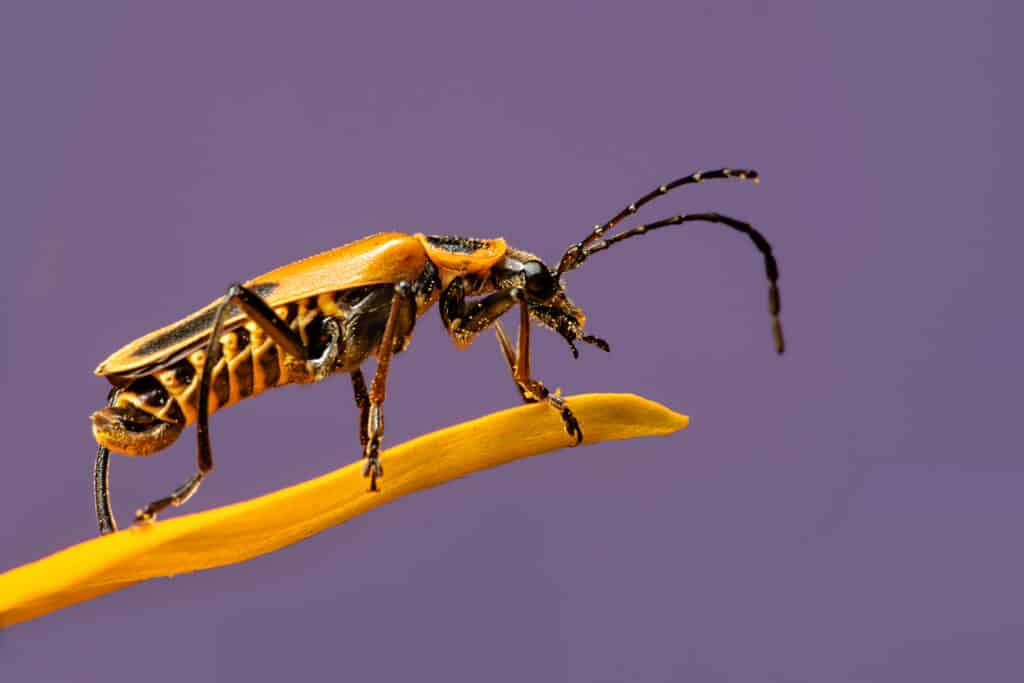
Soldier beetles are beneficial insects as they help pollinate flowers and get rid of insect pests.
©Muskoka Stock Photos/Shutterstock.com
Parasitism
Parasitism is a form of symbiosis where the parasite harms the host while receiving a benefit in return. This form of symbiosis is the most harmful of the three discussed. Also, it’s the one where the term host is most accurate.
Parasites can take many forms. For example, ectoparasites are organisms that live on the outside layers of a host. Fleas and ticks are examples of ectoparasites. Endoparasites are organisms that live inside of the host. Tapeworms and bacteria are examples of endoparasites. Generally, endoparasites are harder to find and treat compared to ectoparasites.
One example of a parasitic relationship is when a cat has fleas. The fleas will feast on the cat’s blood and receive a warm, relatively safe place to live. Meanwhile, the cat will experience serious discomfort from the incessant itching on its body caused by the fleas.
Humans can also host parasites in several ways. Some examples of human parasites include tapeworms, ticks, and face mites from the genus Demodex. These parasites harm humans in some way while receiving a benefit of their own. Humans are adept at removing parasites compared to other organisms.
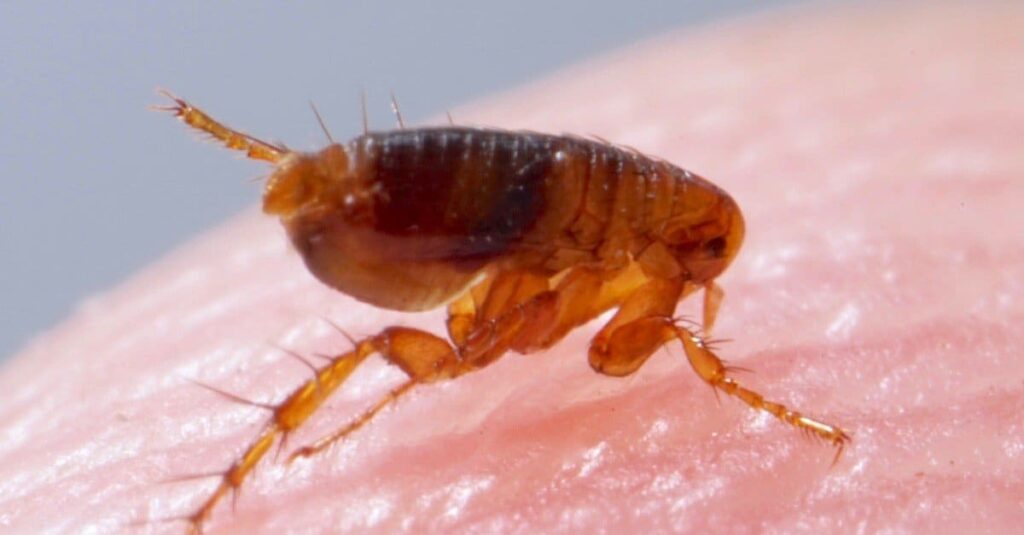
Fleas survive as external bloodsucking parasites of mammals and birds.
©Sahara Frost/Shutterstock.com
Are All Symbiotic Relationships Inherently Harmful?
No, not all symbiotic relationships are harmful. Mutualism provides benefits to the host as well as the other symbiont. Commensalism is a symbiotic relationship that provides a benefit for one of the creatures without harming the host.
Both of these types of symbiotic relationships exist without causing significant harm to the host. In fact, symbiotic relationships can even provide a benefit to the host.
Hosts and Organisms That Engage in Symbiotic Relationships
Many organisms engage in parasitism, mutualism, and commensalism either as a host or as a symbiont. Consider the following pairings based on the organisms’ relationship.
| Parasitism | Mutualism | Commensalism |
|---|---|---|
| Giardia and Human | Oxpecker and Zebra | Remora and Shark |
| Tick and Dog | Clownfish and Anemone | Cattle Egret and Cow |
| Tapeworm and Cow | Human and Domestic Dog | Bird and Tree |
| Leech and Fish | Bacteria and Cows | Barnacle and Whale |
| Lice and Human | Bees and Flowering Plant | Human and Wolf |

Some types of birds can eat hundreds of ticks and up to 12,000 larvae per day off of their cattle hosts.
©EdenF/Shutterstock.com


